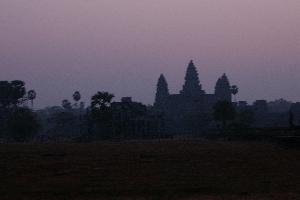
Angkor Silhouette
Playing with exposure time, I was able to get this shot while the horizon was still dark. (I'm saving others for later posting... ;)
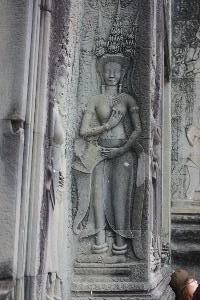
Abundant Apsaras
One motif that is common to nearly all Angkor art -- regardless of the period in which it was built -- is that of the Apsara, mythological nymphs which sprung venus-like into existence in the Khmer creation story.
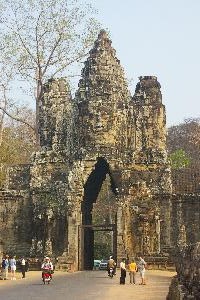
South Gate
Later that morning, we headed to the south gate of the Angkor Thom complex... just a short drive north of Angkor Wat, and stone's throw from the first day's sunset at Phnom Bakheng. This is one of the many well-traveled parts of the complex, and it's hard to get into the moment with busses coughing out diesel smoke as they head through the gate.
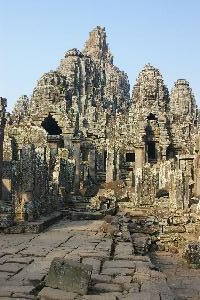
The Bayon
This incredibly picturesque temple was built in the late 12th century, and depicts an architectural and artistic style unique to its period. It's also a lot of fun to explore, with many nooks and hidey-holes and multiple terraces. One can only imagine what it looked like in its day...
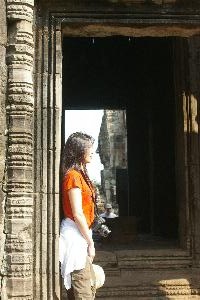
Nose to Nose
The tour-guides have a figured out all the "kodak moments" to be found in the ruins, and The Bayon has its share... as we can see, it's possible to go nose-to-nose with a Buddha. (Or was that Shiva, hmmm... how quickly we forget these things!)
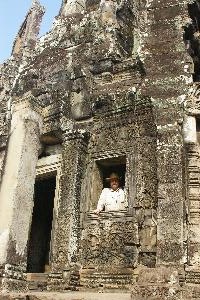
Another Lawn-Gnome Moment
Yup, this is one of those obligatory "yes, mom, I'll have somebody take my picture" pictures. I guess it's not so much for a mother to ask... ;)
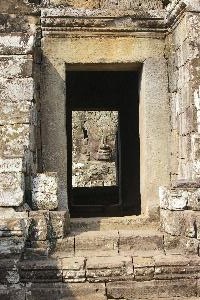
Buddha in the Window
A room with a view... of the adjacent cupola, this small shrine affords is another one of those oft-recommended kodak moments.
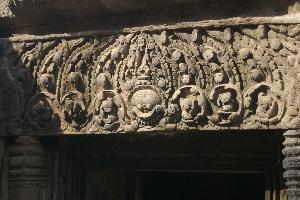
800-year detail
One of the things that remains so amazing is the state in which much of these ruins are in. Bear in mind that the exteriors of nearly everything here is sandstone, which is relatively soft and subject to erosion. But somehow, the detail remains crisp and well-defined, as is shown in this lintel.
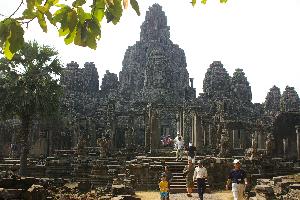
Bayon North
The outermost perimeter of this multi-tiered structure has taken the most serious damage, as can be seen by the outer wall being little more than a few pillars and tumbled stones.
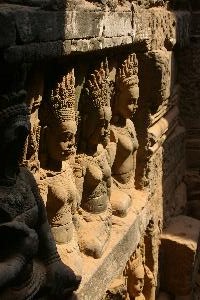
Apsara Line
Here, in a part of the Terrace of Elephants, some exquisitely-preserved Apsaras bask in the late morning sun.
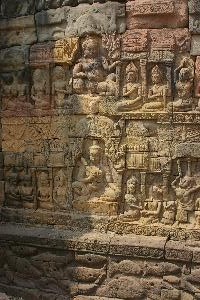
Naughty and Nice
Here, the deity (Shiva?) is depicted with his two wives, each with a list of names and deeds. The one on the left (appropriately shaded) is the list of those who have done evil, and on the right is the list of those that have done good. These lists of who's been naught and who'se been nice sounds vaguely familiar. ;)
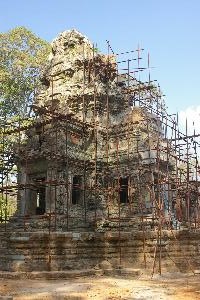
Restoration Efforts
There are many countries that have been actively participating in the restoration of Angkor Wat: France and Japan seem to have contributed the most, with other countries, such as Germany and China also adding to process. By the way, not all the temples you see today are as they were found. Several had collapsed and were subsequently restored, and others have actually been completely disassembled and reassembled within the last century. Here, a building from Chao Say Tevoda is being given a new lease on life.
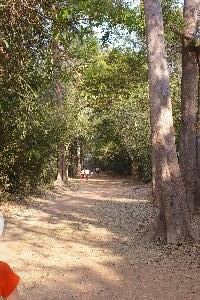
Mysterious Jungle Path
Ahhh... this, to me, evokes the spirit that I've always associated with Angkor Wat. In fact, for the longest time, I assumed that all of Angkor Wat looked like this little site, Ta Prohm, and it wasn't until much later that I learned that most of it had actually been restored. Here at Ta Prohm, though, the jungle still reigns.
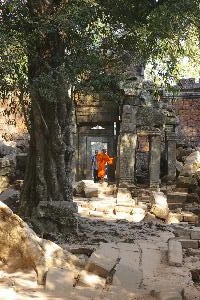
Saffron Robes
Another mistaken rarity was the odd Buddhist monk lingering amidst the desolate ruins... but in actuality, they are quite common nearly everywhere. They do add a wonderful splash of color, too.
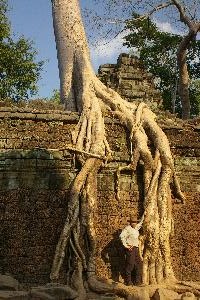
Jungle takes Root
While most of the other sites are being restored to as close to original state as is possible, Ta Prohm remains refreshingly unrestored, including these invasive trees which have over time so incorporated themselves into the stones that their removal is all but impossible. In fact, in many places, the roots are all that are still holding the walls together. Yeah, another Lawn-Gnome moment.
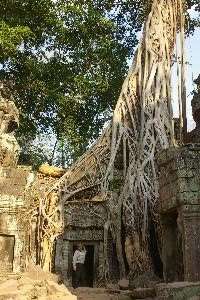
Wooden Irony
The Angkor Wat area, in spite of being badly damaged by the ravages of time and the encroaching jungle, oddly owes its continued existence to the same jungle, which kept most plunderers, blunderers, and all manner of more destructive forces from leveling these pieces of world heritage. One need only imagine whether the Buddha statues in Afghanistan would have missed the Taliban's vandalism if they, too, had been shrouded in the thick green carpet.
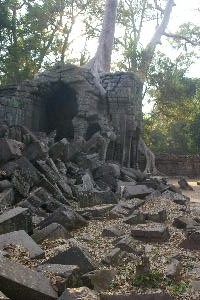
Hold Things Together
Just an example of how the tree, while having invaded the stone structure, has actually helped hold it together. The adjacent wall has already crumbled.
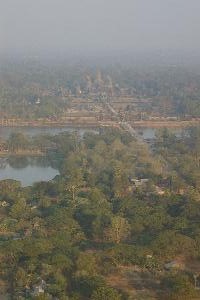
Angkor Wat Aerial View
One of the ways to see the complex is by hot-air baloon, a tethered contraption that rises to about 150 meters (about 500 feet) above the ground. The moat, wall, and inner complex of Angkor Wat are visible in the distance.